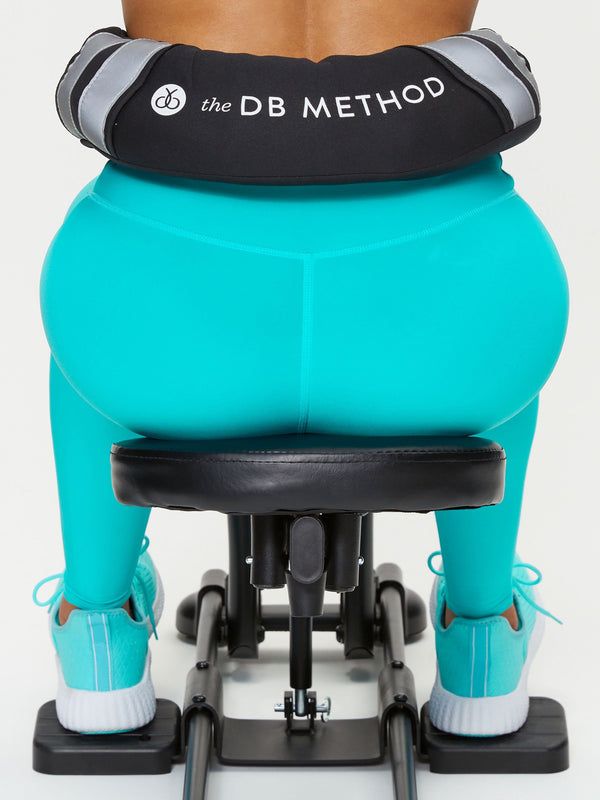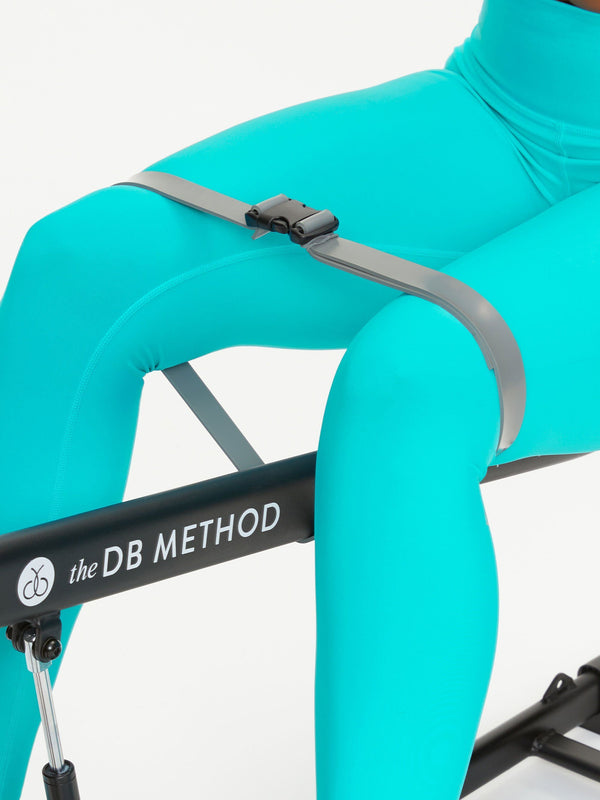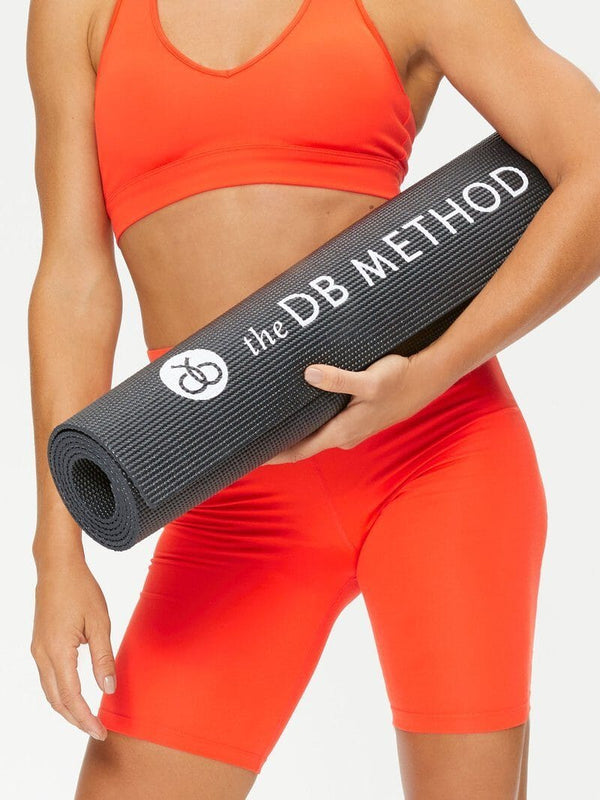If you want to dunk like the pros, tighten and tone your tush and thighs, or become a better runner; squats are for you. And squats can be used to strengthen your entire body when you use the right variations. The trick is to know which squats have what benefits, and how to maximize their performance.
So lets start with the 9 main benefits of squats, then “jump” into which squat is the best for the specific benefit and why.
The top benefits of squats include:
- Improving your mobility
- Strengthening the muscles of your lower body
- Increasing your vertical jump
- Faster sprinting and long-distance training
- Enhancing your flexibility
- Burning calories
- Improving your core strength
- Boosting your bone mineral density
- Better balance
Improve Your Mobility
Squats help improve your mobility as you slow down with age by keeping your tendons and ligaments from losing all of their elasticity. And vice versa, deep squats can also work to strengthen your hips and ankles for a full range of motion and mobility.*
Split squats are the best to improve your mobility.
Split squats include balance, stretching, lunging, and if you change legs with a jump, cardio. This gives them a greater range of motion, and they work for strength training, toning, and flexibility, making it the best squat for improving mobility.
- Start in a wide, staggered stance with your right leg in front and your left leg behind. Keep your arms down at your sides.
- Bend your knees until your left knee almost touches the floor, and your right thigh is parallel to the floor.
- Hold for 1-3 seconds and return to the starting position.
To make a split squat easier, do a split squat with your front leg on an elevated surface. Front foot elevated split squats also help to improve your flexibility as well as target your glutes and hamstrings.
To make a split squat more challenging, you can add a jump and leg switch in between each. Another option is to add a weighted vest for extra intensity.
Strengthen The Muscles Of Your Lower Body
From getting out of bed in the morning to taking a walk, your glutes, quads, hamstrings, adductors, hip flexors, and calves are put to work. One of the benefits of doing squats is that squats work these exact muscle groups.
If you’re looking to work the muscles in your lower body, the sumo squat is for you!
Since sumo squats train all three of the major muscle groups in your legs (quads, glutes, and hamstrings), this is a one and done exercise if you’re short on time.
- Stand with your feet wider than hip-width apart and your feet turned out.
- With your hands clasped together at your chest, push your hips back and squat down while keeping your back straight and your upper body lifted up.
- Push through your heels to return to the starting position.
Increase Your Vertical Jump
Vertical jumping requires strong calves, glutes, and hamstrings, which happen to be the same muscles a squat works. If you play sports like tennis, volleyball, or basketball where you need explosive power, the benefits of squats are exactly what you need to up your game! And wall squats will focus on these three muscles.
The wall squat strengthens your thighs, quads, and tendons, and trains them to increase their force and stored energy. That energy is then released when you jump, helping you jump higher.
- Start with your back against a wall with your feet shoulder width apart and two feet from the wall.
- Slowly slide your back down the wall until your thighs are parallel to the ground.
- Adjust your feet so that your knees are directly above your ankles.
- Hold for 20 to 60 seconds.
- Slide slowly back up the wall to a standing position.
Wall squats can be modified to match your fitness level to make them easier, such as decreasing your hold time in Step 4, or limiting how far down you slide down the wall. They’re also perfect for adding medicine balls and resistance bands.
And if you are using the benefits of a wall squat for the sports mentioned above, hold the medicine ball in front of you to work your arms while you work your legs.
Faster Sprinting & Long-Distance Training
One of the best benefits of squats is the ability to help you sprint faster, and run/walk faster and longer. Both sprinting and long-distance walking require strong glutes, legs, and hips.
Because these three body areas are constantly engaged in a squat, you’re not only getting a workout, but you’re also power-packing your abilities, which can help with running, soccer, and lacrosse. Not to mention it’ll help if you’re going on a vacation and will have to walk a lot.
If you’re ready to speed up the process, you’ll want to try jump squats.
Jump squats build your leg and glute strength which increases your speed and explosiveness.
- Stand with your feet shoulder width apart and your knees slightly bent.
- Bend your knees and lower yourself to a full squat position.
- Jump up and off the floor while extending your legs.
- Upon landing, lower yourself again and immediately repeat the next jump.
Jump squats can be made easier by slowing down the movement.
To increase the difficulty level and effectiveness of jump squats:
- Try jumping onto a step or low bench.
- Don’t rest between reps.
- To develop more power, use an isometric version where you pause and squeeze your quads and glutes before you jump up.
Enhance Your Flexibility
The movement from squats benefits your flexibility, as each time you lower and rise, you’re bending and stretching your leg muscles. The more you do squats, the deeper you will eventually be able to go, because the muscle groups worked are becoming more flexible.
Pistol squats are the best in helping with flexibility, not to mention also helping to preventing lower body injuries caused by muscular imbalances as a bonus benefit.
- Stand holding your arms straight out in front of your body at shoulder level and parallel to the floor.
- Raise your right leg off the floor in front and hold it.
- Push your hips back and lower your body as far as you can go.
- Hold for 1-3 seconds, and then push your body back to the starting position.
To make pistol squats easier:
- To help with your strength, use a box or bench, sit as you would normally, and then stand up using just one leg at a time.
- If you need help with your balance, use a resistance band to give you a hand.
Two variations to make a pistol squat more intense include:
- Tempo pistol squats activate more muscles as you change the time you hold the movement.
- Pause pistol squats are an advanced variation that will also improve your balance.
Burning Calories
Did you know that squats can burn more calories per minute than running on the treadmill? Squats burn an average of 35 calories a minute, while running on the treadmill burns between 5-9 calories per minute (depending on your speed and incline). Most people think of the benefits of squats are limiting to toning, but they’re an amazing calorie burn, including when you use a squat machine.
And one of the best calorie-burning squats is the side kick squat.
Side kick squats are a fun and easy way to add cardio to your strength training by combining squats and lateral kicks to target your glutes, quads, and hamstrings. This engages your cardiovascular system for a calorie-burning break between sets.
- Stand with your feet shoulder width apart in a squat position with your hands clasped together at your chest.
- Bring your left leg up to the side with your knee bent. Then, straighten your leg out to perform a kick.
- Return to the starting position and repeat on the right side.
Plus, increasing the intensity of a side kick squat for more benefits is easy by adding a set of ankle weights. This makes your legs and core work harder benefiting both muscle groups with a more intense workout.
Improve Your Core Strength
While most people think the benefits of squats are for working your legs, they also target and require your core to work with your glutes, hips, abs, obliques, and back extensors. By improving your core strength, everyday movements like turning, standing, and bending become easier. Overhead squats are the best way to do this.
Overhead squats use your entire body, including your shoulders and abs. They also require balance and focus. This is why the overhead squat benefits your core, and is our number one pick.
- Stand with your feet shoulder distance apart and your toes angled slightly outward.
- Put a barbell across the back of your shoulders on your traps.
- Place your hands slightly wider than you would for a back squat, so they're closer to where the plates are loaded.
- Keep your torso upright, bend your knees, and lower your hips a few inches.
- Now, extend your knees and hips as you drive the barbell up over your head.
- Fully extend and lock your elbows at the top.
- Shift your hips back slightly and bend your knees. Squat down like you are trying to sit on your heels and go as far as you can while still maintaining control. Your elbows should still be fully extended.
- Press through your feet while using your glutes, quads, hamstrings, and core to fully extend your knees and hips as you return to the starting position.
- Bend your elbows and return the barbell to your shoulders.
Since overhead squats are an advanced movement, if you're just getting started, try using a broomstick or PVC pipe. You can also add in thrusters to your workout, because this full-body exercise is one step back in difficulty.
Other squat variations you can do to challenge yourself are:
- Kettlebell overhead squats, while challenging your core, also improve your shoulder stability.
- Hanging weight overhead squats are significantly harder, because of the instability of the moving weights on the barbell. Not only do they work your core muscles, they will challenge your shoulder strength and stability.
- Snatch grip bottom presses are an advanced movement that challenge the mobility in your ankles, knees, hips, and shoulder joints, as well as your ability to keep your torso upright with your core.
- The dumbbell overhead squat enhances your upper body agility and stability while also working your core muscles.
Boost Your Bone Mineral Density
Squats signal your body to increase the mineralization of your bones and to build more bone. As we age, bone density becomes more and more important, so squats are worth doing just to delay bone loss and decrease your risk of fractures.
The best squat to boost your bone mineral density is the back squat, because the movement targets some of the biggest muscles in your body. By focusing on the larger muscle groups, you can help boost your mineral density.
- Stand with your feet shoulder width apart.
- Place a barbell on your traps and shoulders. Grip the bar just outside your shoulders; you should have a full grip around the bar.
- Keep your back straight, push your hips backwards, and bend your knees to squat down.
- Go until your hips descend lower than your knees.
- Hold for 1-3 seconds, and then push yourself back up.
Better Balance
Squats not only develop your leg strength, but they also work out your stabilizing muscles that help you to maintain your balance. This lowers the risk of falls if you’re older or recovering from an injury, and makes you more agile for athletics. And your best bet to improve your balance is the Bulgarian split squat.
This movement strengthens all muscles targeted with a standard squat with Bulgarian split squats, and because you’re using one leg at a time, you’re training your body for better balance and control.
- Stand in front of a knee-high platform (like a weight bench) about 2-3 feet.
- Get yourself into a forward lunge position with your torso upright, your core braced, and your hips square to your body.
- Extend your right leg behind you and rest your toes on the platform.
- Keeping your torso upright, slowly lower your right knee toward the floor. Lower until your front thigh is almost horizontal, keeping your knee in line with your foot. Your front knee should form a 90-degree angle.
- Reverse the move and return to the starting position.
Bulgarian Split Squat Modifications
You can make these squats harder by adding weights to it:
- Hold a pair of dumbbells to your side or wear weighted gloves.
- Barbells can be used in front of you, held behind you, or placed across the back of your shoulders.
- Lifting a medicine ball above your head adds increased intensity, an arm workout and helps your body by adding new balance obstacles.
There are more than 9 benefits from doing squats, but the ones listed here are the main ones. And because it is easy to modify a squat with extra twists, weights or balance exercises, you can change a squat to create the benefits that meet your individual needs.
Sources:
*https://www.ncbi.nlm.nih.gov/pmc/articles/PMC4415844/
https://www.ncbi.nlm.nih.gov/pmc/articles/PMC4262933/
https://www.ncbi.nlm.nih.gov/pmc/articles/PMC3588648/








